Battle for Kalinin
From 13 in October, 1941 raged fierce battles on the main operational areas: Volokolamsk, Mozhaysk, Maloyaroslavets and Kaluga. A difficult situation developed on the right wing of the Western Front. The 22-th, 29-i and 31-th armies were kept here. Our troops, retreating under pressure from the main forces of the 9 of the German army and covering the approaches to Rzhev, moved in an organized manner to the line of Ostashkov - Sychevka. However, our troops failed to gain a foothold at this turn.
The German command planned to create a new "boiler" by the forces of the 9th army and the 3rd tank groups on the northern flank of Army Group Center and clear the road to Moscow from the northwest. The Germans were planning to take Kalinin on the move, bypass Moscow from the north, launch an offensive north to the rear of the North-Western Front and, under favorable conditions, strike at Yaroslavl and Rybinsk.
Events developed rapidly. On October 10 from the Sychevka region, striking the main attack in the direction of Staritsa-Kalinin, the 41 th motorized corps (1-I tank, 6-I infantry and 36-I motorized divisions) of the 3-I tank group and 27-I army division went on the offensive 9 Army Corps. At the same time, the 6 Army Corps of the 3 Tank Group and the Elets from the Nelidov District, the 23 Army Corps of the 9 Army, launched an offensive on Rzhev north-west of the Dnieper. In the morning of October 11, the forward detachments of the 41 th motorized corps occupied the Teeth, on the evening of the same date, the Burned Hill Settlement, and October 12 Staritsa. Our separate isolated units, which had lost contact with their headquarters, retreated eastward in disarray.
A deep breakthrough of the 3 tank group’s connections between Sychevka and Vyazma and the possible output of the 41 motorized corps to the rear of the armies of the front’s front wing forced the Soviet command to remove the I.Ya. Maslennikov from the front and deploy it along the left bank of the Volga River for cover Rzhevskoy groups from the south-east. At the same time, by order of the Stavka, 29 rifle divisions were withdrawn from the armies of the right wing of the front to be transferred to the Mozhais line and to the Kalinin area. However, events developed so quickly that they had to make significant changes to these plans.
Meanwhile, the Germans, developing the offensive, dealt a strong blow from the area southeast of Rzhev along the right bank of the Volga. The atmosphere was really very complicated. German aviation inflicted continuous strikes on Kalinin. As a result, fires broke out in many places. German tanks, not meeting any serious resistance, advanced along the Staritsky highway. There were no defenses at the approaches to the city, and there were no army units to organize defense in the Kalinin area (with the exception of junior lieutenant courses, the Higher Military Pedagogical Institute and fighter squads). Major General V. A. Khomenko, commander of the 30th Army, had no units and formations at his disposal, with the exception of the 5th Infantry Division arriving by rail in the Kalinin area.
Due to the fact that an extremely dangerous situation has developed on the right wing of the Western Front (there was a threat that the enemy’s troops would leave the flank and rear of the North-Western and Western Fronts), and the command of the combat activities of the troops there from the front headquarters was complicated, Deputy Commander Colonel-General I. S. Konev. The general was instructed to organize the activities of our troops in this area. “October 12 as the commander of a group of troops,” IS Konev later recalled, “I arrived in Kalinin and immediately got into a very difficult situation.”
The Stake also instructed to send five units (183, 185 rifle, 46 th, 54 th cavalry division, 8 th tank brigade) to the Kalinin area and 46 th motorcycle regiment. Of these compounds, an operational group was created, headed by Lieutenant-General N. F. Vatutin, chief of staff of the North-Western Front.
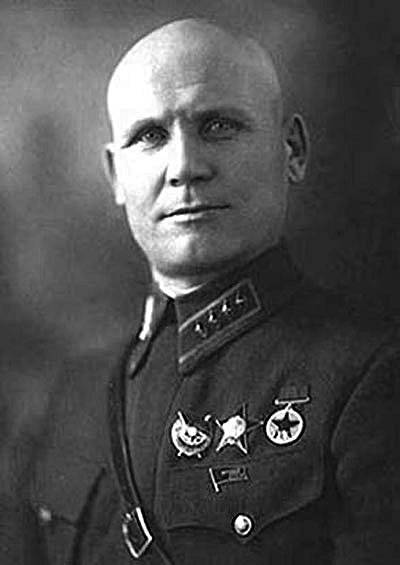
Commander of the Kalinin Front I. S. Konev
Fights for Kalinin
October 12 began to arrive in Kalinin railway trains with parts of the 5 th infantry division of Lieutenant Colonel P. S. Telkov. The division was in a weakened composition. So, the 5 Division comprised: 1964 active fighters, 1549 rifles, 7 heavy machine guns, 11 light machine guns, 14 76 and 122 mm 6 anti-tank guns. In the three rifle regiments there were an average of 45 fighters.
On the morning of October 13, Major General Khomenko arrived in Kalinin and began to prepare the city for defense. He ordered the head of the NKVD to consider all available in the city weapon and pass it on to the armed forces of the national militia. Parts of the 5 Rifle Division took up defensive positions on the outskirts of the city from the south and southwest. The width of the division defense line reached 30 km, depth 1,5-2 km. There was no time to prepare an engineering defense. Already in 9 hours of October 13, the reconnaissance detachment of the 142 Infantry Regiment engaged enemy tanks west of the village of Danilovsky.
In the afternoon of October 13, the enemy's 1 Panzer Division, which had 12 thousand people, 150 tanks and about 160 guns and mortars, after artillery and aviation training attacked the 142 rifle regiment. At the same time, the enemy motorized infantry battalion crossed the Volga and captured the village of Cherkasovo. Providing stubborn resistance, the regiment units were forced to move to the southwestern outskirts of the city. The division commander brought the 190 th infantry regiment into battle. Through the efforts of two regiments, the enemy’s offensive was halted. An attempt by the Germans to seize the city on the move failed.
On the night from 13 to 14 of October, units of the 256 Infantry Division began to arrive in Kalinin under the command of Major General S.G. Goryachev (as part of the 934, 937 of the infantry regiments and 531 of the light artillery regiment). The 256 Division was also not full-blooded. In the infantry regiments, on average, there were 700 fighters. By the morning of October 14, the German command pulled the main forces of the 1 tank division, the 900 motorized brigade and some of the forces of the 36 motorized division to the city.
Thus, the enemy in the Kalinin area had a serious advantage in strength. The absence of our troops northwest and southeast of the city allowed the Germans to carry out a roundabout maneuver and reach the rear of the 5 Infantry Division. Forcing the Volga by the Germans created a threat of capture of the northern part of the city. The situation in other areas was also not in favor of our troops. Parts of the German 6 Army Corps were engaged in street fighting in Rzhev, and the 23 Army Corps, taking possession of Olenin, continued the attack on Yelets.
October 14 German troops launched an offensive, delivering the main blow on both banks of the Volga. On the western outskirts of Kalinin, heavy fighting ensued. Soviet soldiers defended steadfastly. Together with the soldiers of the 5 Infantry Division, the courses of junior lieutenants, students of the Higher Military Pedagogical Institute, fighters of the fighter and militia groups fought. But the forces were too unequal. Combat orders of the Soviet troops were subjected to massive strikes by enemy aircraft. The Germans broke into the city itself. Part of the 5 th Infantry Division, under the pressure of superior enemy forces, retreated to the center of the city and took up defensive positions along the r. Thymake Persistent street fighting in the southern part of Kalinin lasted all day and night. By the morning of October 15, the 5 Infantry Division was forced to leave the city.
At the same time, units of the 256 Division were fighting in the northern part of the city. But after the enemy in the center of the city reached the bridge over the Volga, the threat of German tanks breaking through to the rear of the units fighting on the left bank was created. As a result, the 934 th rifle regiment retired to the Nikolo-Malitsa line and to the north, having the task together with the advanced units of the 8 tank tank brigade of Colonel P. Rotmistrov and the 16 frontier regiment to prevent the enemy from breaking through to the Leningrad highway to Torzhok. The 937 th infantry regiment of the division took up defensive positions along the eastern coast of Tvertsy.
Thus, overcoming the stubborn resistance of our troops, the Germans captured the main part of the city. The loss of Kalinin was of strategic importance. German troops were able to develop the offensive, using highways to Moscow, Bezhetsk and Leningrad.
To prevent further breakthrough of the enemy, Konev set the 30 army to put a counterstrike in the morning of October 15 and restore the previous position. The main blow from the southeast was to be inflicted by the 21 tank tank brigade Colonel B. M. Skvortsova in cooperation with the 5 rifle division. They had to seize the railway station, go to the right bank of the Volga west of Kalinin and cut off the enemy grouping that had broken into the city. However, the 21-I tank brigade received another task from the Deputy Chief of the General Staff, and therefore the 15 of October in the battles for the city of Kalinin could not take part. The rest of the army during the 15 and 16 of October struck the enemy scattered blows that did not lead to success.
Thus, the Soviet troops failed to solve the task of liberating Kalinin, but by their actions they detained the enemy and caused him great damage. The Germans were forced to abandon the attack along the Moscow highway on Klin and could not develop an offensive on the Bezhetsk highway.
Further fights. Counterstrike Soviet troops
Having captured Kalinin, the German command turns the main forces of the 9 Army from the Staritsa and Rzhev region in the direction of Torzhok, Vyshny Volochka. The 3-I tank group also had to move from the Kalinin area to Torzhok and Vyshny Volochek. With these operations, the Germans planned to cut off the withdrawal paths to the east to the troops of the right wing of the Western and Northwestern Fronts, and in cooperation with the 16 Army, Army Group North, surround and destroy them.
The most important role in disrupting these plans was played by the Vatutin Task Force. In just one day, the 8 Tank Brigade with the 46 Motorcycle Regiment of Major V. M. Fedorchenko made an 250 km march and on October 14 advanced units engaged in the battle for Kalinin. In order to improve the leadership of all units operating north-west of Kalinin, General Vatutin subordinated them to the commander of the 8 Tank Brigade and ordered him to counter-attack the enemy in the northern part of the city. During October 15, fierce fighting took place on the northwestern outskirts of Kalinin. Our troops counterattacked the enemy. But the Germans, focused on this direction, the main forces of the 1-th tank division and the 900-th motorized brigade and went on the offensive themselves. Both sides suffered heavy losses.
The Germans managed to break through the defenses of the 934 Infantry Regiment of the 256 Division and by the end of the day go to the Medniy area. The commander of the 8 Tank Brigade was ordered to go to Polustov (8 km north-west of Copper) and prevent the enemy from advancing further to Torzhok. The fulfillment of this task, Colonel Rotmistrov laid on the 8-th tank regiment, Major A. V. Egorov. The regiment by this time was one tank KB, five T-34, six T-40, six T-38. The tank regiment for 17 of October destroyed 5 German tanks and two PTO guns with counterattacks and ambush fire. However, part of the tanks and motorcycles broke through and the Germans were only 20 km away from Torzhok.
The commander of the 8 Tank Brigade decides to withdraw the brigade to the Likhoslavl area. The situation was critical. Colonel-General Konev, in a telegram to Lieutenant-General Vatutin, demanded: “Rotmistrov for failing to comply with the combat order and unauthorized departure from the battlefield with the brigade to arrest and bring to justice the military tribunal”. Lieutenant General Vatutin, assessing the situation and the position of the remaining formations of the operational group, demanded from Rotmistrov: “Immediately, without losing a single hour, return to Likhoslavl, where, together with the 185 units, quickly strike at Mednoy, destroy the broken enemy groups. . It's time to end with cowardice! "
This stern lesson benefited Rotmistrov. In the ensuing battles, the 8-I tank tank brigade acted very successfully, received the title of the Guards, and Pavel Alekseevich Rotmistrov was awarded the high title of Hero of the Soviet Union. After the war, he was given the military rank of Chief Marshal of the Armored Forces.
Taking into account that the Kalinin area acquired independent strategic importance, the October 17 headquarters created the right wing of the Western Front (22, 29 and 30) and Vatutin Kalininsky Front groups led by I. Konev. Corps Commissar D. S. Leonov was appointed a member of the Military Council of the Front, Major-General I. I. Ivanov was appointed Chief of Staff. In total, the front had 16 rifle and two cavalry divisions, one motorized rifle and two tank brigades. Front troops acted in the 220 km band. On October 21, the 31 Army was included in the Kalinin Front. The front did not have its own aviation. It was supposed to support the aircraft of the North-Western Front. Reliable defense and the prevention of the breakthrough of enemy troops to Moscow from the northwest, according to the plan of the Supreme Command Headquarters, was one of the main tasks of the troops of the Kalinin Front.
In the meantime, the main forces of the Vatutin operative group left the Kalinin-Torzhok area: 183-I Rifle Division, Major General K. V. Komissarov, 185-I Rifle Division, Lieutenant Colonel K. A. Vindushev, 46-I Cavalry Colonel S. V. V. Sokolova and 54-I cavalry division of Colonel I. S. Yesaulova. In addition, the operational group included: 133-I Rifle Division, Major General V.I. Shvetsov, 119-I Rifle Division, Major-General A. I. Berezin, a separate motorized rifle brigade of A. N. Ryzhkov. In total, the operational group had more than 20 thousand people, 200 guns and mortars and 20 serviceable tanks. To support the actions of the operational group, 20 aircraft were allocated from the air forces of the North-Western Front.
From three sides, our troops embraced an enemy force that had broken through along the Leningradskoye Highway. General Vatutin planned to surround and destroy the 1-th tank division and the 900-th motorized brigade of the enemy. October 18 operative group troops launched an offensive. For several days, fierce battles were fought. The offensive of the Soviet troops from different directions was sudden for the enemy. Part of the operational group Vatutin went to the rear of the enemy grouping that had broken through to Torzhok and cut it off from the city. By October 21 the Germans were defeated. Remains of defeated enemy troops fled to the right bank of the Volga. The threat of the Germans entering the rear of the North-Western Front was eliminated.
Thus, the Germans were able to capture Kalinin, but could not use it as a springboard for further offensive. German troops failed to develop the offensive against Torzhok, Likhoslavl and Bezhetsk, the threat of encircling the 22 and 29 armies was eliminated, and the enemy was breaking through to the rear of the North-Western front and surrounding part of his forces. During the fierce fighting, the Germans suffered great losses (especially the 1-I tank division and the 900-I motorized brigade). The German command was forced to transfer additional forces to the Kalinin area.
A certain role for the general situation in the Kalinin region was played by the 21-th tank brigade raid on the enemy’s rear. After completing October 12 formation near Vladimir, the October 14 brigade arrived by rail at Zavidovo and Reshetnikovo stations, where on the night of October 15 received the order of Lieutenant General K. K. Rokossovsky, commander of the 16 army. The order stated: "... immediately go on the offensive in the direction of Pushkino, Ivantsevo, Kalinin, with the goal of striking the flank and rear of the enemy to assist our troops in the destruction of the Kalinin group of enemy troops."
In Turginov, the brigade was reassigned by the order of the commander of the Western Front to the 30 Army, whose commander clarified its task. It was that, moving along the Volokolamsk highway, to destroy enemy reserves in the area of the villages of Krivtsovo, Nikulino, Mamulino and together with parts of the 5 rifle division to capture Kalinin.
In the morning of October 17, a brigade tank regiment consisting of 27 T-34 tanks and eight T-60 tanks moved to Kalinin. Soviet tankers met stubborn resistance of the enemy in Efremov and Pushkin. The entire route from Pushkin to Kalinin tanks were subjected to air strikes, and when approaching Troyanov and Kalinin met with resistance of anti-tank guns. As a result, only eight tanks managed to reach the southern outskirts of Kalinin, and only one T-34 tank (commanded by senior sergeant S. X. Gorobets) broke into the city and carried out a heroic raid on it, leaving the 5 Infantry Division. The rest of the surviving tanks reached the Pokrovsky area on Turginovsky highway.
Thus, the Soviet tankers inflicted certain damage to the enemy, sowed panic. But the team could not carry out the task. The enemy had large tank and anti-tank forces in the Kalinin area. Our tankers were thrown on a breakthrough without the support of infantry and aircraft. In addition, the offensive of the brigade was not supported by the active actions of other units of the 30 army. The 5 Division was regrouping that day. In this battle, the brigade lost 11 tanks T-34 and 35 people killed and wounded. The regiment commander, Hero of the Soviet Union, Major M. A. Lukin, and the commander of a tank battalion, Hero of the Soviet Union, Captain M. P. Agibalov, died.
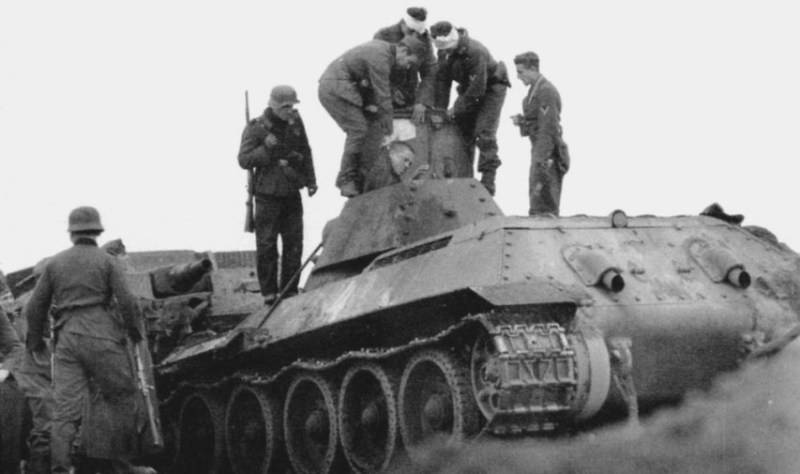
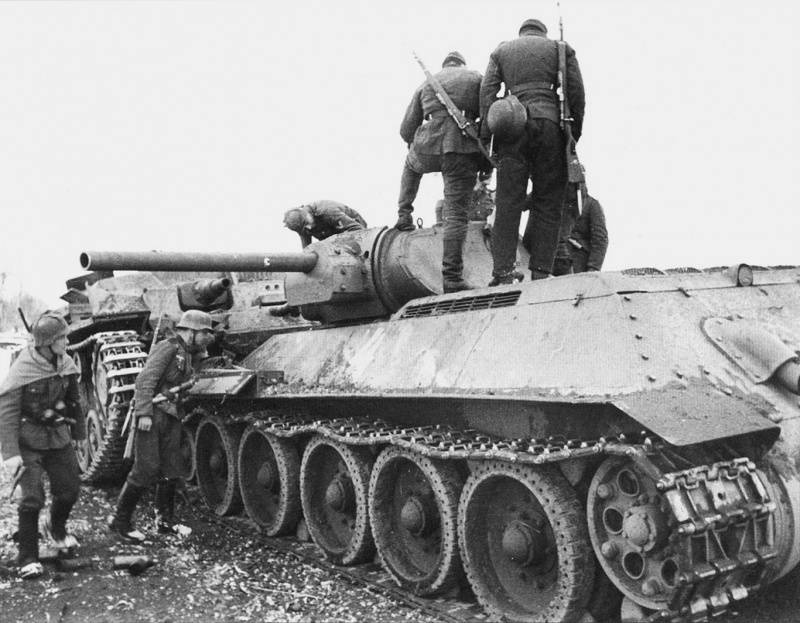
During the raid on Kalinin 17-18 in October, the T-34 tank with the 4 line number from the 21-th tank brigade rammed SAU StuG III by Lieutenant Tachinski with the 660-th assault battery of assault guns. Both combat vehicles were out of order. Crew was captured
As a result of these battles, 23 of October was followed by a directive by the commander of the Army Group "Center" von Bock to suspend the offensive through Kalinin. October 24 The 23 and 6 army corps of the 9 army, reinforced by two motorized divisions of the 3 tank group, launched an offensive from the Rzhev-Staritsa line to Torzhok. But the Germans could not overcome the resistance of the 22 and 29 armies, at the end of October they were stopped at the turn of the Bolshaya Kosh and Darkness rivers and went over to defenses on the lines reached.
In late October - early November, the 1941 front on the Kalinin direction stabilized exclusively at the turn of Selizharovo - the Bolshaya Kosh River - the Darkness River - the northern and eastern outskirts of Kalinin - the western bank of the Volga reservoir. The offensive actions of the troops of both sides in the Kalinin Front defense zone in November did not have much success. The blow to the flank and rear of the North-Western Front provided for by the enemy’s plan was thwarted, and the participation of the 9 Army in the attack on Moscow was excluded. I.S. Konev noted: "Continuous and bloody battles, which, although they did not bring us palpable territorial successes, exhausted the enemy greatly and caused enormous damage to its technology."
Former commander of the 3 tank group, General G. Got noted: “Because of the lack of fuel, the 3 tank group was stretched between Vyazma and Kalinin and got stuck on this sector, getting involved in heavy fighting near Kalinin, and already lacked ammunition. Large in size, combat-ready forces of the enemy, concentrated on the left bank of the Volga and north-west of Rzhev, hung over its flank. Thus, the chances of bypassing Moscow from the north and south at the same time were very slim. ”
Battle results
Thus, the energetic strikes of the Red Army in the Kalinin area, although they did not allow the city to be beaten off, but thwarted the fulfillment of the main task, for which the German 3-I tank group was deployed from Moscow to the north. A part of the forces of the Army Group Center (13 divisions) was linked by battles in the Kalinin sector, which prevented them from being transferred to Moscow, where the decisive battles took place.
Soviet troops thwarted the attempts of the German troops to make a breakthrough to Torzhok-Vyshny Volochek in order to encircle the troops of the right flank of the Western Front and exit the enemy to the rear of the North-Western Front. The troops of the Kalinin Front occupied a covering position in relation to the northern flank of Army Group Center.
However, the Soviet command made a number of mistakes in assessing the capabilities of the enemy and its troops. Thus, the command of the Kalinin Front made a mistake by undertaking at a crucial moment a defensive operation about disbanding the operational group of General Vatutin: some of the formations of the operational group were included in the 31 army, some were transferred to the 29 and 30 armies and taken to the front reserve . It was a real shock force of five compounds. The transfer of these compounds to the armies violated the established control. The possibility of immediate action to liberate the city of Kalinin was missed. This led to the failure of the front to conceive the headquarters. The Kalinin Front failed to surround the enemy grouping in Kalinin in October.
By taking Kalinin, the Germans turned it into a major stronghold. They concentrated here a large number of infantry and vehicles. All measures were taken to strengthen the city. The area of the city was turned into a springboard for further offensive. In mid-November 1941, the German troops launched a new offensive against Moscow, breaking through the defenses of the 30 Army.
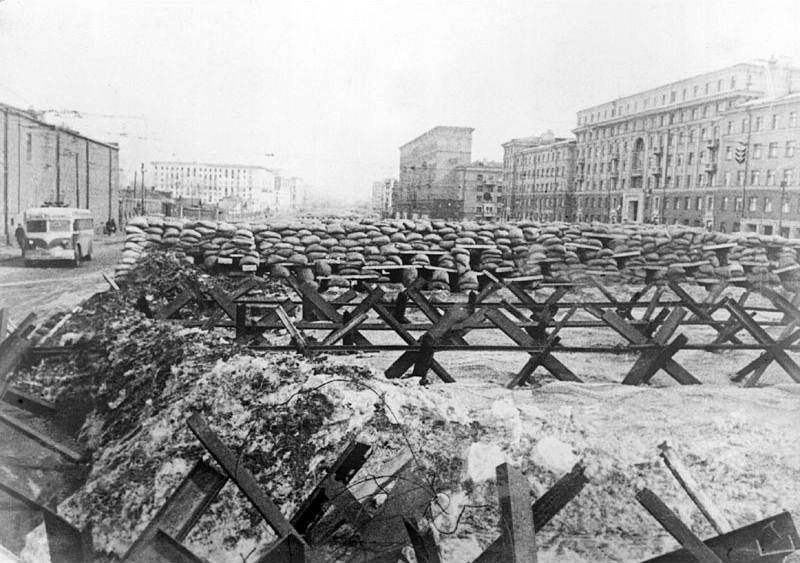
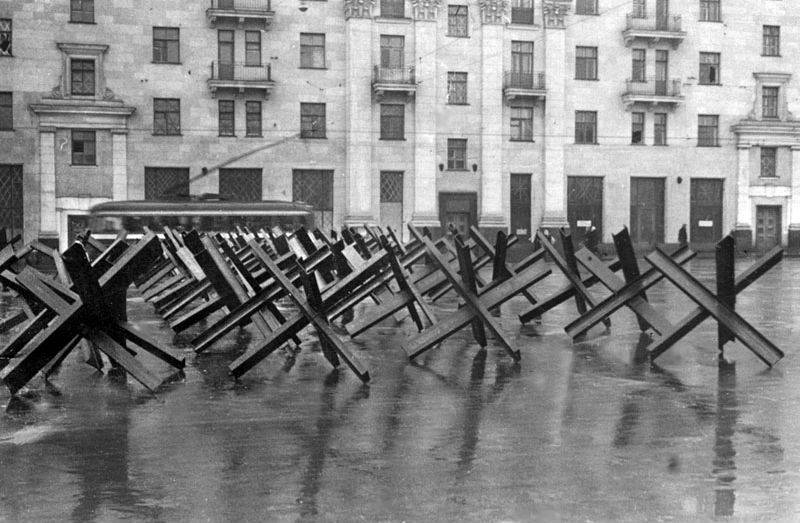
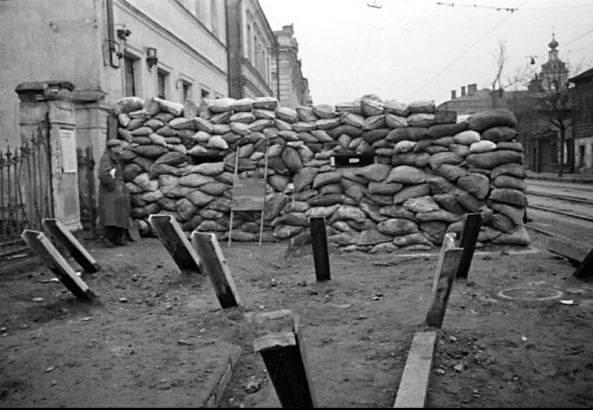
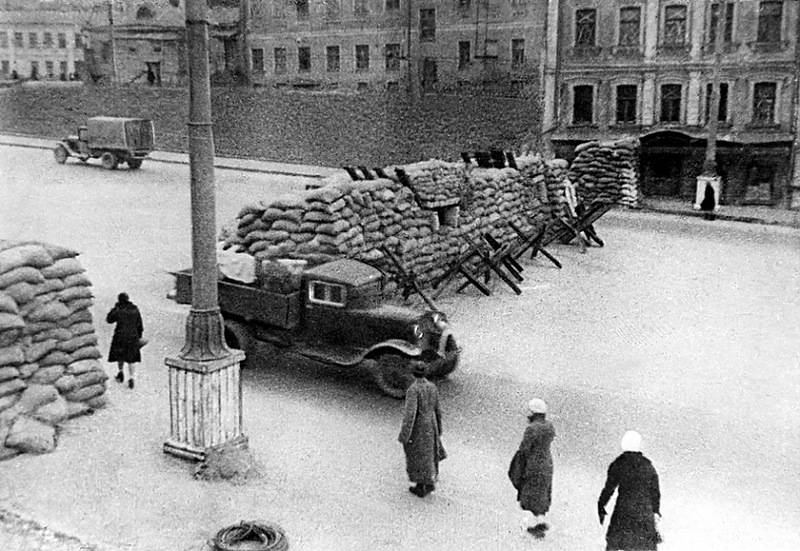
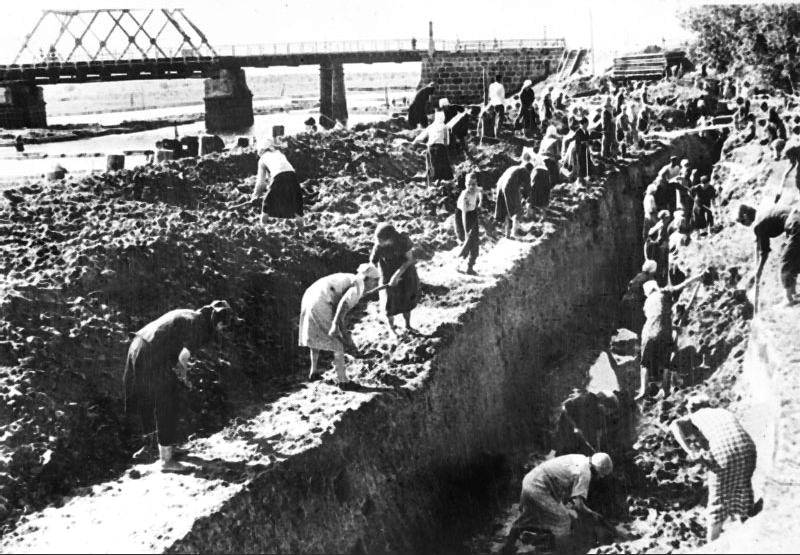
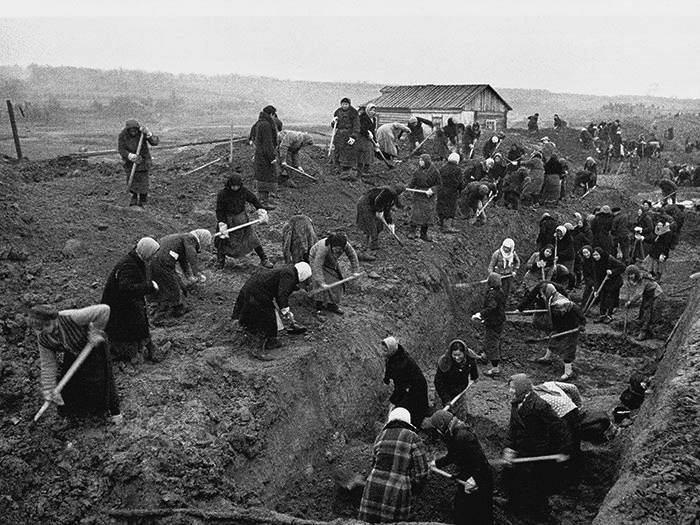
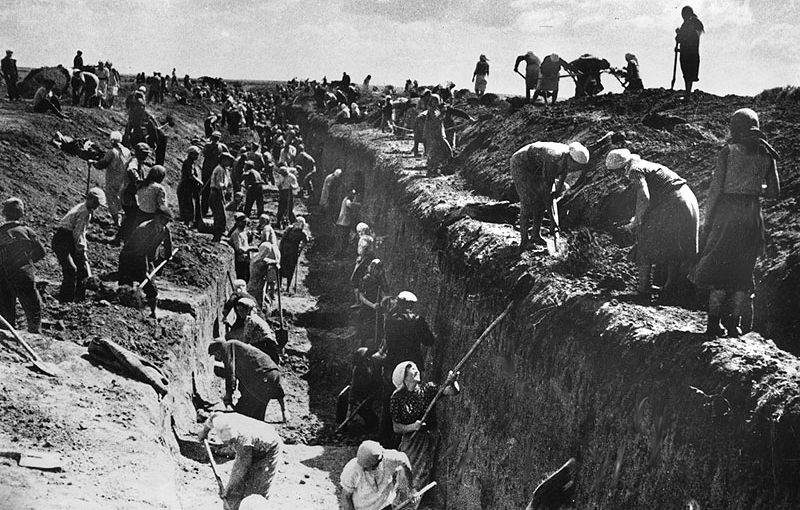
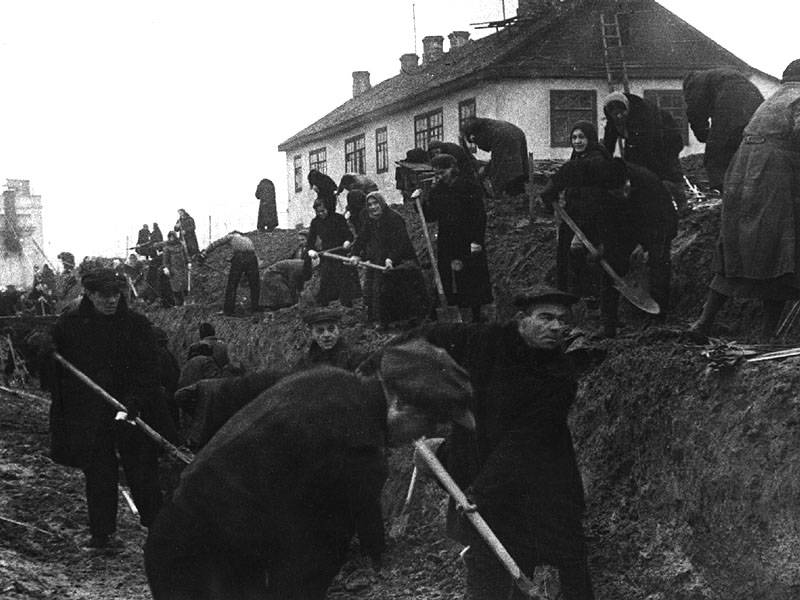
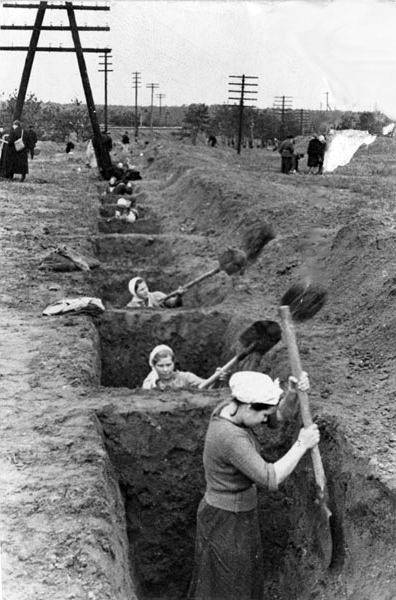
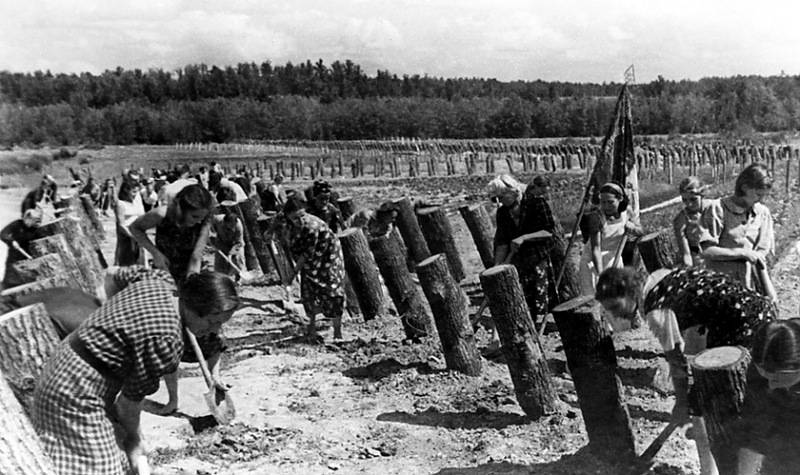
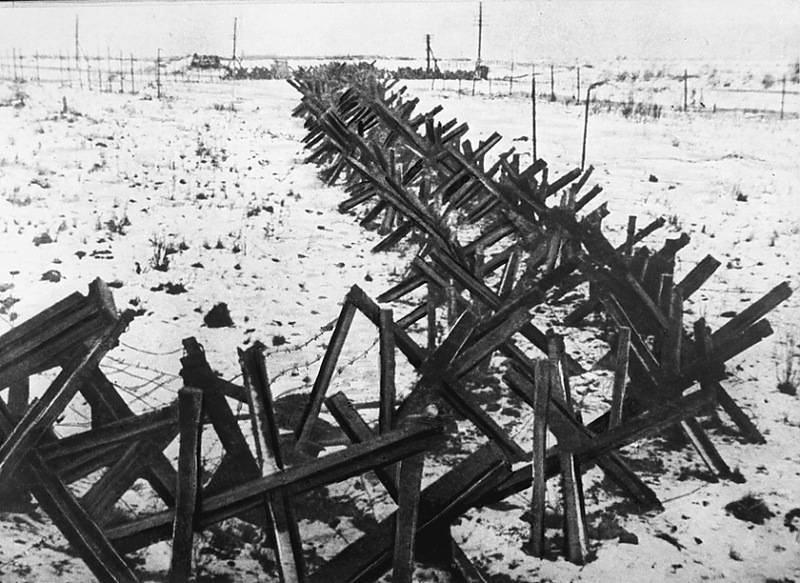
Preparation of defense in Moscow and on the outskirts of the capital
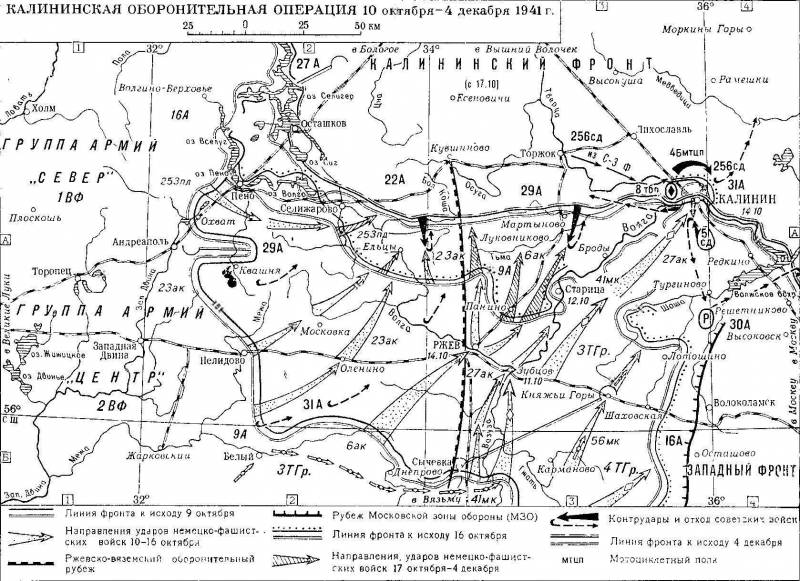
Information